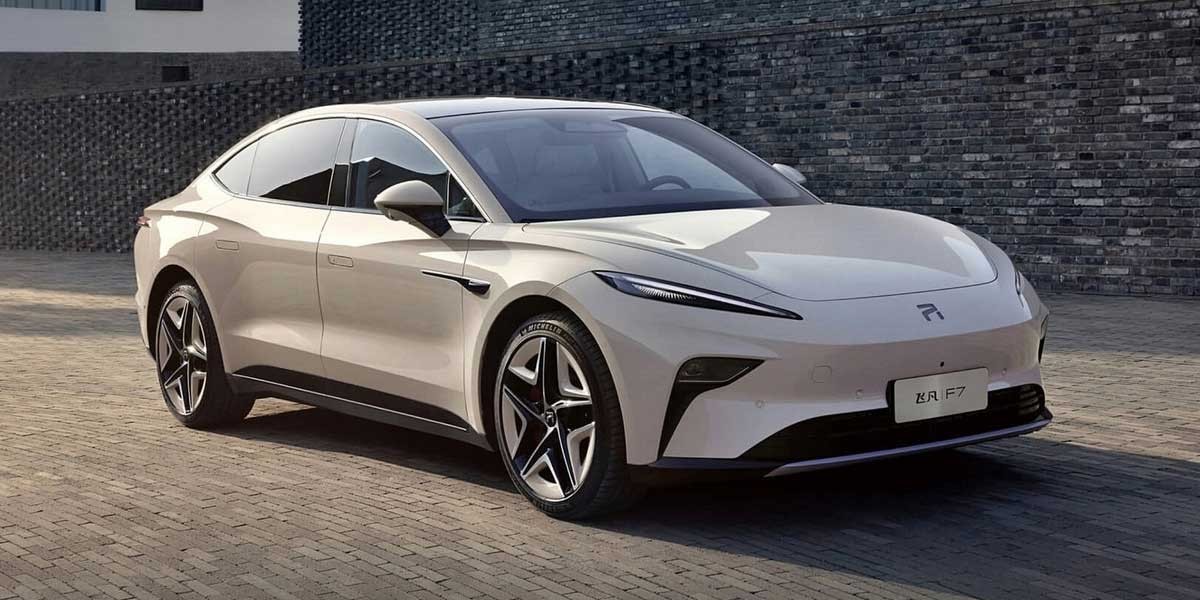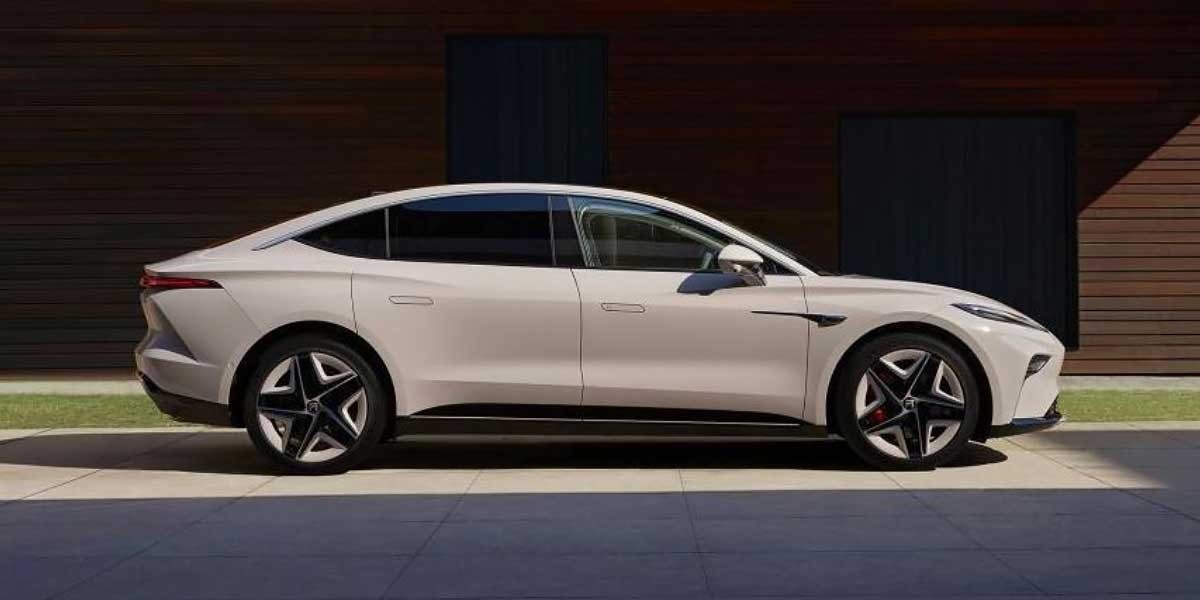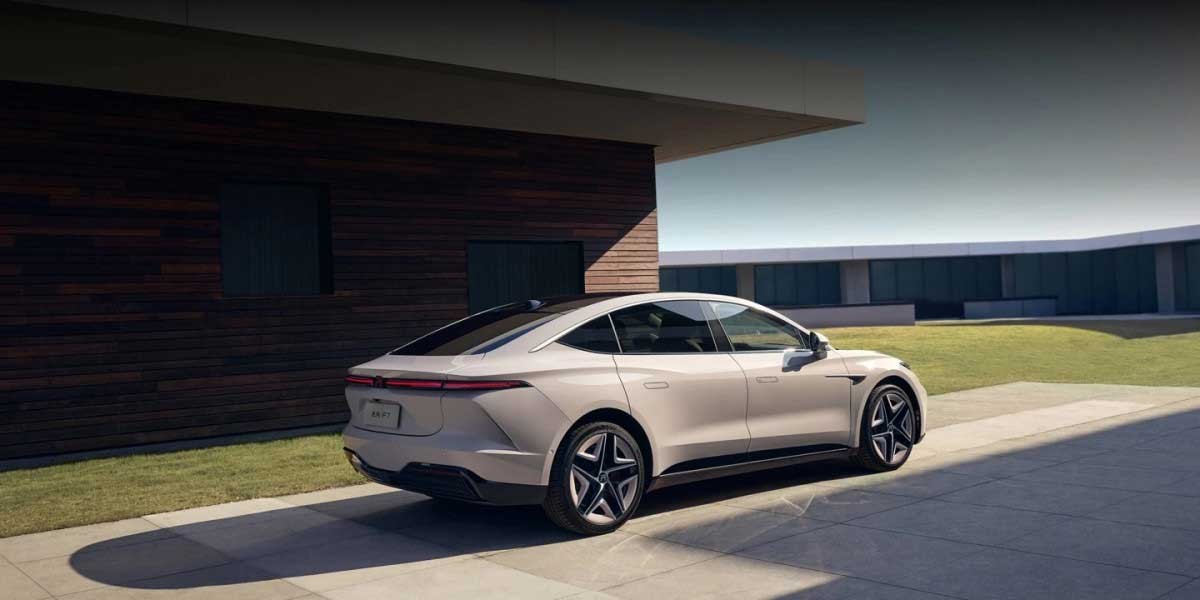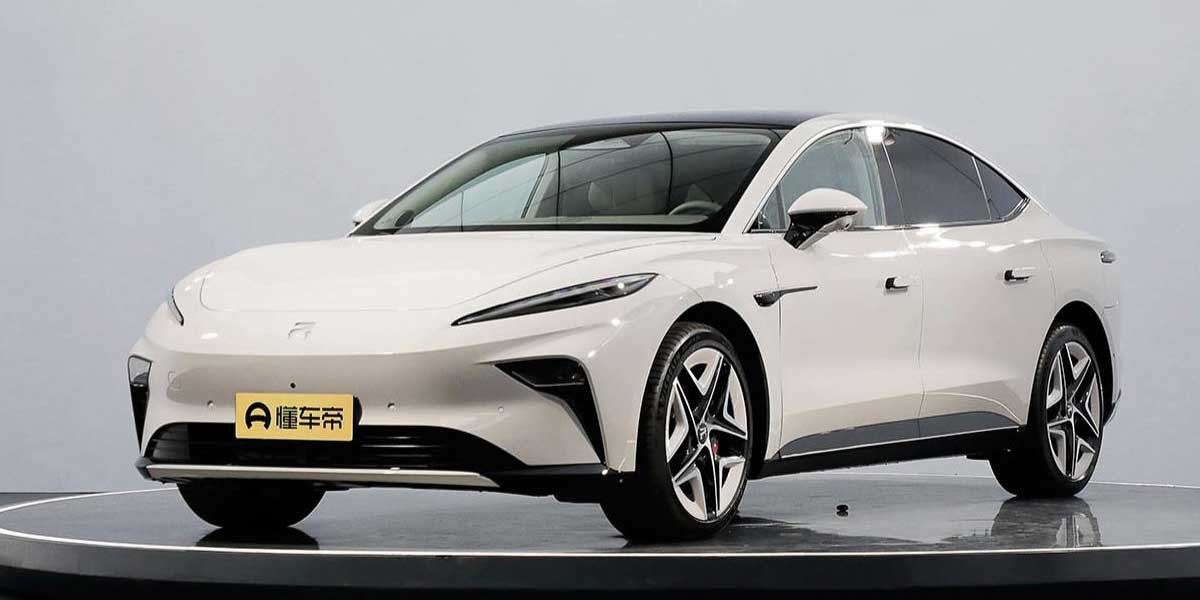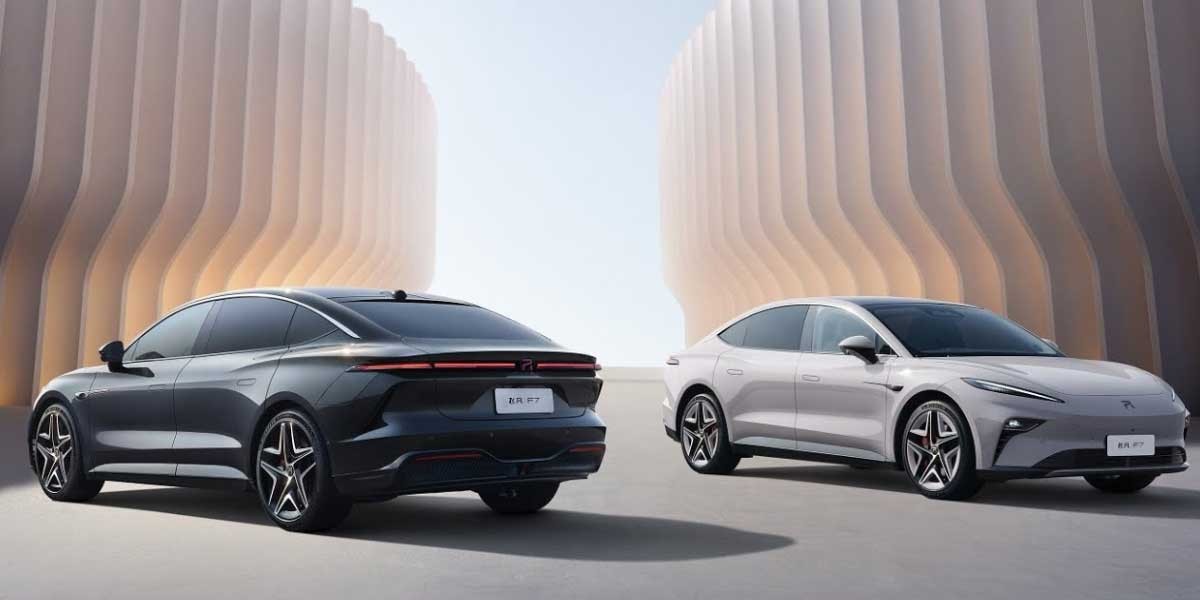SAIC F7
User Rating: 3.18 / 5





What is the SAIC F7?
The SAIC F7 is a sleek, state-of-the-art SUV designed by Shanghai Automotive Industry Corporation, featuring advanced technology and a luxurious interior for an exceptional driving experience.
SAIC F7 price:
US$ 41000 *
| manufactured in | China |
| model year | 2023 |
| electric range (km) | 666 |
| battery (kWh) | 90 |
| max. speed (km/h) | 200 |
| 0 to 100 km/h (sec) | 3.7 |
| power (h.p.) | 544 |
| car type | hatchback / 5 doors |
| drive type | AWD |
* Minimum price set by the manufacturer, excluding taxes and additional options

Exterior and Interior photos of SAIC F7
SAIC F7 Review
SAIC F7: Unleashing the Future of Electric Hatchbacks
Introducing the SAIC F7, an innovative 5-seater electric car from Feifan Company, also known as Rising Auto. As the first pre-sale of its kind, the SAIC F7 has already garnered excitement among eager buyers. Set to hit the market by the end of March, this cutting-edge hatchback offers a remarkable combination of range, power, and enticing incentives. With its affordable starting price and advanced features, the SAIC F7 is set to redefine the electric car landscape.
SAIC F7 Specifications: Where Performance Meets Efficiency
Battery Power: 90 kWh
The SAIC F7 is powered by a reliable 90 kWh battery, providing ample energy for extensive drives and reducing the need for frequent charging.
Dominating Power: 544 Horsepower
With an impressive power output of 544 horsepower, the SAIC F7 offers an exhilarating driving experience that showcases the true potential of electric propulsion.
Electric Range: 666 km
Embark on extended journeys with ease, as the SAIC F7 boasts a generous electric range of 666 kilometers, making it an ideal choice for both urban and long-distance travels.
Effortless Acceleration: 0 to 100 km/h in 3.7 seconds
Experience lightning-fast acceleration as the SAIC F7 sprints from 0 to 100 km/h in just 3.7 seconds, delivering an exciting and responsive driving performance.
Maximum Speed: 200 km/h
Cruise confidently at a top speed of 200 kilometers per hour, ensuring smooth and controlled handling on various terrains.
Incentives and Advanced Features: Setting New Standards
The SAIC F7 90 kWh model impresses not only with its performance but also with its array of enticing incentives. Buyers can enjoy the benefits of free charging or battery replacement for the entire service life, allowing for worry-free usage and significant savings on energy costs (up to 1,500 kWh per year). Additionally, the SAIC F7 comes equipped with the Rising Pilot ADAS system, a cutting-edge advanced driver assistance system that enhances safety and convenience on the road.
Manufacturer: SAIC - Driving Automotive Innovation
In conclusion, the SAIC F7 is a game-changer in the world of electric hatchbacks, delivering exceptional performance, efficiency, and advanced features. With its attractive starting price, generous range, and enticing incentives, the SAIC F7 is set to captivate drivers seeking a thrilling and eco-friendly driving experience.
Manufacturer: SAIC
Related Video
Comparison:
Range
When it comes to range, the SAIC F7 claims an impressive 666 kilometers (414 miles), putting it at the forefront. The Tesla Model 3 (Long Range) offers 580 kilometers (360 miles) but falls short of the F7. Meanwhile, the Nissan Leaf clocks in at just 364 kilometers (226 miles), making it a long way behind. BMW i3 is even further back, delivering a mere 310 kilometers (193 miles). Lastly, the Hyundai Kona Electric and Kia e-Niro provide admirable figures of 482 kilometers (300 miles) and 455 kilometers (283 miles), respectively.
Acceleration
In the acceleration department, the SAIC F7 goes from 0 to 100 km/h (62 mph) in a jaw-dropping 3.7 seconds. Thats blisteringly quick, though the Tesla Model 3 Performance edges closer with its 3.5 seconds. The BMW i3 takes a noticeable backseat at 7.2 seconds, while the Kia e-Niro and Hyundai Kona Electric are somewhere in the middle at around 7.8 seconds. As for the Nissan Leaf, it’s the tortoise in this race, clocking in at a leisurely 7.9 seconds.
Power
Under the bonnet, the SAIC F7 roars with a robust 544 horsepower. The closest contender is the Tesla Model 3 with about 450 horsepower in its Performance variant. Hyundai Kona Electric and Kia e-Niro both offer a modest 201 horsepower, while the Nissan Leaf and BMW i3 come in at the lower end, with 214 and 170 horsepower, respectively.
Charging Time
Charging time is a critical factor for EV enthusiasts. The SAIC F7 needs roughly 8 hours using a standard home charger, which, let’s face it, is par for the course. In contrast, the Tesla Model 3 minimizes downtime with its landmark Supercharger network, pumping the car to 80% in about 30 minutes. The Hyundai Kona Electric and Kia e-Niro can also juice up to 80% in under an hour. Neither the Nissan Leaf nor BMW i3 stands out here, each taking about 7-8 hours on a standard home setup.
Price
The SAIC F7 offers an enticing price tag at $41,000, £31,000, or €36,000, delivering exceptional value for its performance and range. Compare this to the Tesla Model 3, starting at an arguably steeper $49,000 (£40,000/€46,000). The Nissan Leaf is more budget-friendly at $31,000 (£25,000/€29,000). The BMW i3? A posh $45,000 (£36,000/€42,000). Hyundai Kona Electric and Kia e-Niro hover around $38,000 (£30,000/€35,000), striking a balance between economy and functionality.
The SAIC F7 impresses with its long range, rapid acceleration, and competitive price point, making it a formidable player in today’s EV market. With clever engineering and an eye towards future mobility, this hatchback is setting the pace for what an electric vehicle should be.
F.A.Q.:
What is the range of an electric vehicle on a single charge?
The SAIC F7 can travel up to 666 kilometers (414 miles) on a single charge.
How long does it take to fully charge an electric vehicle?
The charging time for the SAIC F7 depends on the charging station used. Using a standard home charger might take around 8-12 hours, while fast chargers can significantly reduce this time.
Are electric vehicles more expensive than gasoline cars?
The SAIC F7 is priced at $41,000 (€38,000 or £33,500), which can be higher than some gasoline cars, but running and maintenance costs are generally lower.
What is the price of the SAIC F7?
The SAIC F7 is priced at $41,000 (€38,000 or £33,500).
What is the battery capacity?
The SAIC F7 has a battery capacity of 90 kWh.
What is the 0 to 100 km/h acceleration time?
The SAIC F7 can accelerate from 0 to 100 km/h (0 to 62 mph) in approximately 3.7 seconds.
What is the top speed of the SAIC F7?
The top speed of the SAIC F7 is 200 km/h (124 mph).
What is the total power of the SAIC F7?
The SAIC F7 delivers a total power output of 544 horsepower (406 kW).
Can electric vehicles be charged at any charging station?
Yes, most electric vehicles, including the SAIC F7, can be charged at any compatible charging station; however, availability of fast chargers might vary.

